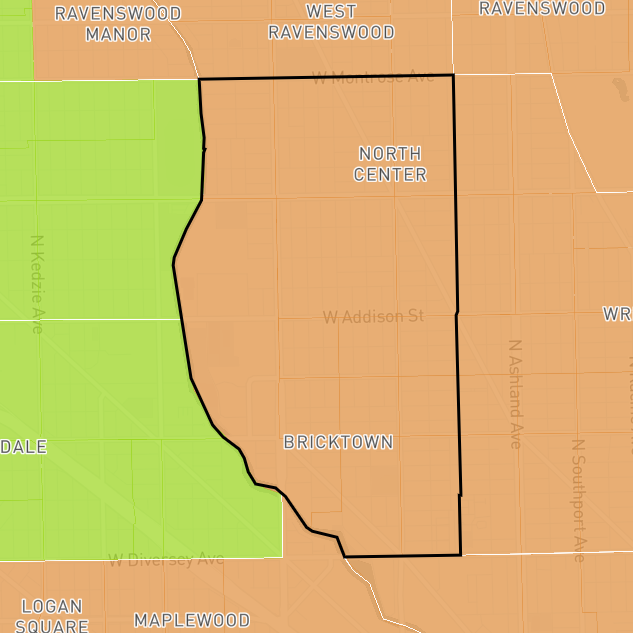Issues + strategies
Most communities have multiple submarkets within their boundaries. The issues facing each submarket as well as strategies tailored to address them are outlined below.
|
Submarkets with primary focus |
| Issue |
3 |
| Community resistance |
|
Community resistance can stymy new housing options. Despite the higher incomes for some submarket 3 households, developers do not report frequent community resistance issues relative to other submarkets. Some believe this is because of the greater mix of ages and incomes present in submarket 3. Others feel this is because many submarket 3 communities have a natural constituency of non-profits, community organizations, and residents who will support new development, including for low-and moderate-income households. A few mentioned the value of strong political leadership in setting the tone for a desire for balanced housing types and acceptance of people from across the income spectrum. That said, resistance in submarket 3 is less than in other areas, but not absent. Some projects do run into resistance due to concerns about parking, traffic, density, height, and income of occupants.
- Community education Targeted efforts to build support for diversity of housing stock and people can help address community resistance.
- Targeted efforts to build support for diversity of housing stock and people can help address community resistance. Many groups, including elected officials, government staff, non-profits, and citizens, have explored ways to build community support for new housing types and greater local diversity. Utilizing these models in submarket 3 can help address community resistance issues. Read more about the many different best practices.
- Value of housing planning Using tools like Homes for a Changing Region can be valuable.
- Using tools like Homes for a Changing Region can be valuable. In the midst of a strong market, it can be hard to find space to step back and think about over-arching issues. Yet, communities that undertake local housing planning, such as that done through Homes for a Changing Region, benefit from a clear vision of the types of housing needed by the community and can be less reactive to new proposals.
|
| Very strong market |
|
Strong markets come with benefits and issues. Submarket 3 neighborhoods are among the strongest housing markets in the region. Such strength allows the market to address housing issues that many other areas struggle with, including an older housing stock. Yet, that strong demand makes it challenging to preserve housing opportunities for current residents. Price and rent increases can drive out existing residents. Demand for smaller rental units is strong enough relative to sales prices that developers are de-converting condominiums into apartments. Demand for single-family homes is so much stronger than rentals that developers tear down multiple rental units to build a smaller number of single-family homes. Market specialists think that demand will not abate in the near future since these areas are often close-in with good job and transit access and a form attractive to many households.
- Affordability through reduced parking Reducing parking requirements can help to keep housing costs attainable.
- Reducing parking requirements can help to keep housing costs attainable. For communities looking to preserve affordability or help create new housing at more affordable prices, reducing or eliminating parking requirements can help. Higher sales prices or rents must support every additional parking space required by a municipality. The more parking required, the more expensive the development. In Chicago, the Transit-Oriented Development Ordinance (TOD) reduces or eliminates parking requirements near transit while density bonuses for developers who take advantage of the provisions. Many believe that this requirement has helped amplify the rental development boom in strong markets like Logan Square and the West Loop, opening up previously undevelopable parcels for action. In Libertyville, developers can cash-out their parking requirements, paying the village a fee in lieu of parking not provided on-site.
- Inclusionary zoning Communities can use strong markets to create affordable housing.
- Communities can use strong markets to create affordable housing. Inclusionary zoning efforts naturally work well in strong markets, leveraging the construction of new market rate units to add affordable units. Many communities in the region have adopted inclusionary zoning ordinances, including Chicago (ARO), Evanston, Highland Park, and Lake Forest.
Affordable requirements ordinance (ARO): Chicago adopted a new inclusionary housing ordinance in 2015. A number of stakeholders identified potential positives and negatives in the ARO. Yet, because the ordinance is so new, it remains to be seen how market rate developers will comply. Monitoring its implementation will help other communities understand whether it will serve as a model.
- Land trusts Land trusts can provide affordable housing in perpetuity by owning land and leasing it to those who live in houses built on that land.
- Land trusts can provide affordable housing in perpetuity by owning land and leasing it to those who live in houses built on that land. Land trusts, like those operating in Chicago and the North Shore, are often an effective tool in helping preserve currently affordable units due to a land trust’s unique ownership structure. When a land trust sells a unit to an owner, they only sell the improvements (i.e. the home), but not the land underneath. As a result, a household can purchase a home for substantially less than what it would ordinarily cost.
- Preservation and expansion of affordable housing Preserving affordable housing options can help existing residents stay in changing neighborhoods.
- Preserving affordable housing options can help existing residents stay in changing neighborhoods. Dedicated programs designed to preserve lower cost units can help ensure that even as a neighborhood changes, existing residents have an opportunity to remain. For example, Chicago passed the Single-room Occupancy Preservation Ordinance in 2014, which helps non-profits compete with private firms to preserve a targeted unit type. Similarly, the work in Albany Park highlights the value of targeted work by local non-profits to preserve units in areas on the cusp of rapid change.
|

 Regional Housing Solutions
Regional Housing Solutions